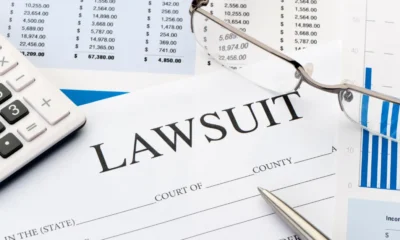Must Read
United Airlines Flight UA770 Emergency Diversion: Dramatic Mid-Air Pressurization Crisis to London

Introduction
United Airlines flight UA770 experienced a sudden emergency when the pilots were required to issue a general emergency signal of “7700” due to a cabin pressurization problem. The Boeing 787-9 aircraft made an emergency landing at London Heathrow Airport during its transatlantic flight between Barcelona and Chicago. In this article, we will shed light on the sequence of events, causes, crew reactions, passenger experiences, technical aspects, and its impact on air safety.
UA770 Emergency Landing Timeline
The flight departed Barcelona at approximately 2:30 p.m. (CEST). Approximately 90 minutes later, when the aircraft was at cruising altitude, the crew noticed an unusual change in cabin pressure. The pilots immediately issued an emergency signal of “7700” and requested a landing at a nearby airport. Air traffic control quickly cleared the airspace of Spain, France, and the UK, and an emergency response was initiated at London Heathrow.
At 4:55 p.m. (BST), UA770 landed safely on runway 27R. Rescue vehicles were already on site. Passengers were transferred by bus to gate B44. A one-hour technical stop was made before arrangements were made for onward travel. No one was injured.
What Caused the Diversion?
According to initial investigations, the cabin pressurization system was affected. This is a serious problem because, at high altitudes, it is necessary to maintain cabin pressure. Modern Boeing 787-9 aircraft are equipped with systems that immediately report even the slightest loss of pressurization. After the pressurization problem, the pilots chose London Heathrow Airport, where emergency services and technical inspection facilities were available.
Crew Response and Communication
The flight crew immediately alerted air traffic control by making an emergency signal. The cabin crew remained calm and gave instructions to the passengers and kept the situation under control. Fortunately, there was no need to use oxygen masks, indicating that the pressure did not reach dangerous levels. The professionalism of the crew encouraged the passengers and saved them from panic.
Passenger Experience
At the beginning of the flight, there was an atmosphere of concern and whispering among some passengers. The flight attendants reassured all passengers. After landing, the passengers applauded and thanked the pilots and crew. Airport staff provided immediate assistance with re-ticketing, food, and hotel arrangements.
Technical and Airport Coordination
The aircraft’s advanced systems immediately sent fault data to United Airlines and air traffic control. Euro control helped to quickly clear European airspace. Heathrow’s advanced landing system enabled a safe landing. After landing, the ground team carried out a thorough technical inspection and security check.
Comparison: UA770 and Other Emergency Landings
| Flight | Plane | Cause | Emergency Airport | Outcome | Key Lessons |
|---|---|---|---|---|---|
| UA770 (May 27, 2025) | Boeing 787-9 | Cabin pressure issue | London Heathrow | Safe, no injuries | Crew and technology preparedness |
| UA507 (June 2025) | Boeing 777-200 | Pressurization issue | Keflavik, Iceland | Safe landing | Global emergency preparedness |
| UA948 (2025) | Boeing 777-200ER | Technical issue | San Francisco Return | Safe landing | Fast connection and re-route |
This comparison shows that while emergency landings are rare, modern technology, global cooperation, and trained crews handle such incidents safely.
Expert Analysis
Aviation experts say that issuing the 7700 emergency signal is not a routine occurrence but a prudent decision. Incidents like UA770 are proof of how important pilot training and modern monitoring systems are. Experts also say that providing transparent information increases passenger confidence and reduces fear.
Impact on United Airlines and the Aviation Industry
United Airlines has reiterated its commitment to safety and is cooperating with the FAA and European aviation regulators. The affected aircraft (tail number N26902) has been grounded for inspection. While this is a routine practice in aviation, the incident will be viewed as a case study for future improvements in maintenance and training systems.
Frequently Asked Questions
Q: What caused the emergency landing of UA770?
A: A cabin pressure issue was identified at cruising altitude, after which the pilots decided to make an emergency landing.
Q: Was anyone injured?
A: No, no passengers or crew were injured. The crew made a safe landing according to protocol.
Q: What assistance is provided to passengers after an emergency landing?
A: Airlines usually provide alternative flights, meal vouchers, and hotel arrangements.
Q: Are emergency landings common during air travel?
A: No, these incidents are very rare, about once in every 1,500 flights.
Q: Is it dangerous to travel after such incidents?
A: Absolutely not. Such actions are proof that safety systems are working properly and precautions are taken to protect passengers.
Conclusion
The emergency landing of United Airlines Flight UA770 is a prime example of modern aviation safety. Technology identified the problem in time, trained crews made the right decisions, and global cooperation made it possible to land safely. While such incidents are a cause for concern, they confirm that systems are constantly improving to make air travel as safe as possible.
Must Read
Shocking Revelations in the Spartan Capital Securities Lawsuit What Every Investor Must Know

Introduction
When a financial services firm faces a serious lawsuit, ripples of concern spread across the investor community. The Spartan Capital Securities lawsuit has drawn intense scrutiny due to claims of misconduct, compliance lapses, and investor harm. In this article, we explore the full story—what’s alleged, what’s confirmed, how investors can respond, and what lessons the broader market should heed.
This is not sensationalism. Rather, this is a reasoned dive into the allegations, regulatory outcomes, and practical steps you can take if your assets were affected. Our aim: clarity, credibility, and actionable insight.
What Is Spartan Capital Securities?
Spartan Capital Securities, LLC is a broker-dealer headquartered in New York. It is registered with industry bodies (FINRA, SIPC, MSRB). The firm operates by offering advisory services, investment products, and brokerage support for registered representatives. As a regulated entity, Spartan must adhere to strict disclosure rules, supervisory obligations, and ethical standards in service of investor protection.
Over recent years, multiple regulatory actions and investor complaints have raised serious concerns about Spartan’s conduct and internal governance.
More Article Here
Key Allegations in the Lawsuit
The Spartan Capital Securities lawsuit centers on several interlocking themes. Below are the major allegations:
| Allegation | Description | Potential Harm to Investors |
|---|---|---|
| Failure to disclose customer arbitrations & complaints | The firm is accused of not timely amending or filing required U4 / U5 forms that disclose investor claims against its brokers, including arbitration awards and settlements. | Obscured risk: prospective clients and regulators lacked full visibility into past misconduct. |
| Excessive trading / churn | Some brokers affiliated with Spartan allegedly traded too frequently in client accounts, generating commissions rather than serving client interest. | Higher fees, lower returns, tax consequences, erosion of portfolio value. |
| Lack of adequate supervision | Spartan is charged with failing to supervise its brokers properly, lacking effective compliance systems to detect and prevent misconduct. | Misconduct goes unchecked, exposing clients to greater financial risk. |
| Regulatory non-cooperation | The firm failed to fully respond to industry inquiries under rules requiring prompt cooperation, especially in investigations. | Slowed regulatory oversight, deeper compliance concerns, larger penalties. |
These allegations, if proven, portray systemic issues rather than isolated misconduct.
What Regulators Found / Sanctions Imposed
While lawsuits often represent allegations, some regulatory bodies have already made determinations:
-
In a formal enforcement case, Spartan was censured and fined $600,000 for failing to properly amend U4 / U5 filings to disclose customer arbitrations and written complaints involving its brokers and executives. The firm was also ordered to retain an independent consultant to review its internal policies. The disciplinary action implicated Spartan’s co-founders and executives.
-
Key executives (John Lowry and Kim Monchik) were fined personally and suspended from associating with any FINRA member firm for two years, and required to correct disclosure forms for arbitrations they failed to disclose.
-
More recently, Spartan accepted a separate penalty of $115,000 after failing to timely respond to three industry investigations between 2021 and 2023 (violating rules requiring cooperation). This later settlement also included a censure and an obligation to improve compliance systems.
-
Meanwhile, several brokers who served under Spartan have been suspended by FINRA for allegations of “churning” client accounts—trading so aggressively that it harmed investors financially.
These outcomes confirm that regulators saw merit in the allegations and held the firm accountable.
Timeline of Key Events
Here’s a concise chronology of the major events in the Spartan Capital Securities lawsuit saga:
-
2015 – 2020: Spartan allegedly fails to timely file 223 amendments to U4/U5 forms covering 72 brokers, including 162 omissions tied to customer arbitrations.
-
2021 (October): Formal disciplinary proceeding initiated by FINRA against Spartan and its key executives for disclosure failures.
-
2022 – 2023: Spartan delays or fails to respond to FINRA inquiries under Rule 8210, triggering additional enforcement.
-
2023: FINRA tribunal imposes the $600,000 fine, censure, and oversight mandate (pending appeals).
-
2024: Supplemental fine of $115,000 for non-cooperation, with censures and compliance enhancements required.
-
Ongoing: Investor arbitration claims continue against Spartan and its brokers. Some have secured awards for misconduct.
This timeline underscores the pattern of regulatory enforcement stretching across multiple years—and evolving allegations.
Why Investors Should Care
Even if you were not directly tied to Spartan, the case holds important lessons:
-
Transparency matters: Misdisclosure deprives investors of essential risk signals when choosing a broker or advisor.
-
Duty of oversight: A firm’s responsibility to monitor and manage its agents is not optional—it’s foundational in protecting clients.
-
Importance of record review: Clients should regularly audit their own account history, looking for red flags like high turnover, sudden losses, or unexplained trades.
-
Time sensitivity: Most securities arbitration or fraud claims face statutes of limitation. Delaying review may forfeit your rights.
-
Leverage accountability: When the regulatory system holds firms accountable, it strengthens the deterrent against future misconduct industry-wide.
How to Evaluate If You Have a Claim
If you believe you were harmed by Spartan or its associated brokers, here is a roadmap:
-
Request your full account statements and trade confirmations
Scrutinize every trade, commission, and account change. Track turnover rates and hidden fees. -
Check BrokerCheck or regulatory disclosure records
Compare what appears in public records versus what was disclosed to you. Inconsistent or missing disclosures may signal red flags. -
Calculate your damages
Compare what your investment would be under a reasonable, conservative strategy versus what it is now. The difference may represent your claim. -
Gather evidence
Seek internal communications, emails, account records, and performance projections. Document any representation or advice made by your broker. -
Consult a securities litigation attorney
A specialized lawyer can analyze your case, determine viability, and guide you through the arbitration or court process. -
File within the deadline
Most claims must be filed within 2 to 6 years (depending on jurisdiction) after discovery of the wrongdoing. Don’t wait.
Comparison Table: Spartan vs. Ideal Broker Standards
| Feature | Spartan Capital (Alleged / Found) | Ideal Broker Standard |
|---|---|---|
| Disclosure of arbitrations / complaints | Delays, omissions, misclassifications | Timely, accurate, full disclosure |
| Supervision of brokers | Weak, reactive, inadequate systems | Rigorous oversight, proactive compliance |
| Response to regulator inquiries | Delayed or incomplete responses | Prompt, full cooperation |
| Trading discipline | Excessive trading / churning allegations | Trades dictated by client interests, not commissions |
| Executive accountability | Executives disciplined for nondisclosure | Leadership held to highest standard |
| Independent review | Required as part of penalties | Built-in compliance audit mechanisms |
This side-by-side comparison highlights where Spartan’s alleged conduct deviated from industry best practices.
Potential Outcomes & What to Expect
In a lawsuit or arbitration involving Spartan, possible outcomes include:
-
Monetary awards: Investors may recover actual damages (losses), interest, legal fees, and arbitration costs.
-
Settlements: Many claims settle before full hearing, often with non-disclosure clauses.
-
Corrective reforms: Firms may be compelled to improve compliance procedures, disclosure practices, and internal supervision.
-
Reputational damage: A high-profile lawsuit can deter future clients and raise scrutiny for similar firms.
-
Regulatory fallout: New enforcement actions or updates to rules may emerge to close gaps exploited in this case.
What Investors Can Do Now (Proactive Steps)
To safeguard your investment interests:
-
Audit past accounts: Especially those under Spartan or its affiliated brokers.
-
Document red flags: High turnover, unexplained fees, sudden losses.
-
Ask direct questions: Request explanations and written justifications of trades.
-
Monitor compliance changes: Stay alert to Spartan’s public announcements on reforms.
-
Talk to professionals: Seek counsel from a securities attorney or forensic accountant.
-
Advocate transparency: Engage investor advocacy groups or forums if you see systemic issues.
5 Frequently Asked Questions (FAQs)
Q1: Can I still file a claim years after I discovered misconduct?
A: It depends on the statute of limitations in your jurisdiction—some allow claims 2 to 6 years from discovery. Acting promptly is critical.
Q2: Will I sue in court or arbitration?
A: Most client agreements mandate FINRA arbitration, not court lawsuits. Your attorney can guide you through the arbitration path.
Q3: What if my broker has left Spartan?
A: You may still claim against the firm (for supervision failures) and the broker (for direct misconduct), even if they moved on.
Q4: Do small investors have a chance?
A: Yes. Many arbitration awards favor smaller accounts when wrongful conduct is proven. Cost sharing and contingency representation can help.
Q5: Are there criminal charges possible?
A: The Spartan case is primarily civil and regulatory. Criminal charges would require proof of fraud or willful misconduct, prosecuted by government agencies, not part of regular arbitration.
Conclusion
The Spartan Capital Securities lawsuit is more than a legal battle—it’s a cautionary tale about the fragility of trust in financial services and the importance of robust oversight. While the firm has already faced significant sanctions, the full scope of accountability will unfold through arbitration, investor claims, and continued regulatory pressure.
If you suspect your investments were mishandled under Spartan or its brokers, don’t delay. Gather your records, seek expert counsel, and explore your rights while they remain intact. The lessons from this case should ripple across the entire brokerage industry and serve as a reminder: transparency, integrity, and accountability are non‐negotiable in protecting investor interests.
Must Read
Can Rabbits Eat Cabbage? The Truth, Risks & Smart Feeding Tips

Introduction
“Can Rabbits Eat Cabbage?” — it’s a question many rabbit owners and enthusiasts ask. Cabbage is a common, affordable vegetable, and its leafy greens look inviting for your furry friend. But is it safe? Does it provide actual benefit? Or could it backfire and harm your rabbit’s digestive system?
In this article, we explore the truth: how cabbage affects rabbits, when (and how much) to feed it, what risks to watch out for, alternatives, and guidance based on expert understanding of rabbit physiology. By the end, you’ll understand whether cabbage deserves a place in your rabbit’s diet — and how to do it the right way.
Understanding Rabbit Digestion & Dietary Needs
Before assessing whether cabbage is safe, it helps to quickly revisit how rabbit digestion works:
-
Rabbits are hindgut fermenters: they rely on fiber to keep gut motility going smoothly.
-
A proper diet is high in fiber, low in concentrated sugars and starches.
-
Their digestive system is sensitive — abrupt diet changes or gassy foods can lead to gastrointestinal (GI) stasis, a potentially serious condition.
-
Rabbits absorb nutrients through a two-step process: first digestion of plant fiber, then re-consumption of soft pellets (cecotropes) to capture beneficial microbes and nutrients.
Thus, any “new vegetable” like cabbage must be introduced cautiously and in moderation to avoid upsetting this delicate balance.
More Article here
What Is Cabbage — Nutritional Profile
Cabbage (a member of the Brassica family) typically contains:
| Nutrient | Approximate Amount (per 100 g raw cabbage) |
|---|---|
| Fiber | Moderate (≈ 2–3 g) |
| Water | High (≈ 90%) |
| Vitamins | Vitamin C, some B-vitamins, small amounts of A, K |
| Minerals | Trace calcium, potassium, magnesium |
| Sugar | Low to moderate (natural plant sugars) |
Because of the high water and moderate fiber content, cabbage might appear “light” nutritionally compared to darker, more fibrous greens. Also, cabbage belongs to the brassica family, which are known to sometimes cause gas in sensitive digestive systems.
Can Rabbits Eat Cabbage? Answer & Context
Yes — rabbits can eat cabbage, but with important caveats:
-
In moderation — small quantities only.
-
Introduce slowly — monitor digestive response (stool, bloating, appetite).
-
Choose certain types over others — darker green, less dense varieties are safer.
-
Avoid overfeeding — too much can lead to gas, bloating, diarrhea.
-
Not ideal for very young rabbits — baby rabbits (under ~12 weeks) should avoid cabbage until their digestive system is more mature.
Veterinary and rabbit-nutrition guidance generally supports that cabbage is “generally safe in moderation” for healthy adult rabbits, but may trigger GI discomfort in sensitive individuals.
Types of Cabbage & Their Suitability
Not all cabbage is created equal for rabbits. Here’s a comparison:
| Cabbage Type | Pros | Cons / Risks | Recommendation |
|---|---|---|---|
| Green cabbage | Widely available; mild taste | Denser, may cause more gas | Use only small outer leaves |
| Red cabbage | Slightly lower in calcium; richer in antioxidants | Similar gas potential | Acceptable in small amounts |
| Savoy cabbage (crinkled leaves) | Looser structure, lighter texture | Still brassica family | Preferable over dense varieties |
| Napa / Chinese cabbage | More water, gentler on digestion | Lower fiber, risk of diarrhea if overfed | Use sparingly, mix with other greens |
| Cabbage core / stem | Crunchy and tempting | Harder fibers, risk of choking or slow digestion | Avoid or finely chop only very small bits |
In general, pick leaves that are fresh, crisp, and from varieties with looser leaf structures — less dense, more forgiving on digestion.
How to Safely Introduce Cabbage — Step by Step
-
Ensure base diet is stable first
Your rabbit should already be eating good quality hay, water, and a stable set of greens. Introducing new items in that context is far safer. -
Wash thoroughly
Remove pesticides, dirt, and possible contaminants. -
Start with a tiny amount
Offer a small leaf fragment (e.g., 1–2 cm strip) one day. Do this for 2–3 days. -
Observe stool and behavior
If normal pellet output, no soft stools, and no obvious discomfort, you may gradually increase. -
Limit total cabbage amount
Cabbage should not exceed a small fraction (e.g. less than 5–10 % of total greens) in a day. -
Alternate with gentler greens
Mix with leafy greens known to be safe (e.g. parsley, romaine lettuce, dandelion greens) to buffer risk. -
Stop if signs of trouble emerge
Bloating, reduced appetite, soft stools, lethargy — immediately remove cabbage until the rabbit recovers.
Risks, Signs, & When to Avoid Cabbage
Key Risks
-
Gas / bloating: Brassica vegetables often ferment more, potentially causing gas and discomfort.
-
Diarrhea / loose stools: Too much water and sudden quantity can upset the gut.
-
GI stasis: If digestion slows, food can back up — a serious risk.
-
Individual sensitivity: Some rabbits tolerate cabbage well; others don’t.
-
Underlying health issues: Rabbits with GI, dental, or metabolic issues should avoid brassicas until vet-clearance.
Warning Signs to Watch
-
Soft or watery droppings
-
Fewer droppings than usual
-
Lack of appetite or refusal to eat
-
Distended belly, signs of pain, or grinding teeth
-
Lethargy or hiding behavior
If you see any of these, immediately remove cabbage and return to safe baseline diet (hay + safe greens). If symptoms persist over 12–24 hours, consult a rabbit-savvy veterinarian.
Practical Feeding Guide & Sample Serving
Below is a sample guideline for an adult rabbit (≈ 2–4 kg). Adjust proportionally for larger or smaller rabbits.
| Meal Time | Hay & Water | Safe Greens (main) | Cabbage Portion (optional) |
|---|---|---|---|
| Morning | Unlimited hay + fresh water | ~1 cup mixed greens (parsley, romaine, dandelion) | A small strip (~2 cm × 4 cm) chopped |
| Evening | — | ~1 cup mixed greens | Another very small piece (only if previous feeding was well tolerated) |
Monthly rotation idea: Offer cabbage only 2–3 times per week, alternating with safer, less risky greens on other days.
Comparison: Cabbage vs Safer Greens
| Feature | Cabbage | Safer Greens (e.g. Parsley, Romaine, Dandelion) |
|---|---|---|
| Gas Risk | Moderate to higher | Lower risk |
| Water Content | High | Moderate to high depending on green |
| Nutrient Density | Moderate, but less fibrous | Typically higher fiber, vitamins |
| Digestive Ease | More challenging for sensitive rabbits | Easier for most rabbits to digest |
| Frequency | Occasional only | Suitable for daily rotation |
| Variety Suitability | Only outer leaves, light varieties recommended | Many types possible; caution with high-oxalate greens |
This comparison highlights that cabbage is a “risky treat” rather than a staple.
Tips to Maximize Safety & Nutritional Benefit
-
Chop cabbage into small bits so it mixes with other greens and slows digestion.
-
Rotate greens daily, so no single leafy vegetable dominates.
-
Monitor intake and output — keep a log of how many droppings and condition.
-
Encourage movement and play — exercise aids digestion.
-
Avoid sudden changes — gradual transitions are safer.
-
Pair cabbage with fibrous hay — the bulk of the diet should always be hay.
-
Be conservative with young or infirm rabbits — only introduce once mature.
FAQs (Before Conclusion)
1. Can baby rabbits (kits) eat cabbage?
No, baby rabbits under ~12 weeks should not eat cabbage or many other vegetables. Their digestive systems are immature and sensitive.
2. How often can I feed cabbage to my adult rabbit?
Limit to 2–3 small servings per week, interspersed among safer greens.
3. Is red cabbage safer than green cabbage?
Not significantly safer. Red cabbage may have slightly lower calcium, but still carries the same gas risk.
4. Can cabbage cores or stems be fed safely?
Generally avoid the dense core or stem. If you do feed, finely chop in very small quantities.
5. What if my rabbit reacts poorly to cabbage?
Immediately stop feeding cabbage, revert to safe diet (hay + gentle greens), and monitor. If symptoms continue beyond a day, seek veterinary care.
Conclusion
“Can rabbits eat cabbage?” — yes, in very limited amounts and with caution. While cabbage offers hydration and minor nutrients, it belongs to the brassica family, which tends toward gas and digestive upset. For most rabbits, safer leafy greens should dominate their diet, while cabbage remains an occasional treat or supplement.
By introducing cabbage slowly, monitoring your rabbit’s reactions, and always backing it with a foundation of abundant hay and safe greens, you can decide whether cabbage has a place in your rabbit’s menu. If ever in doubt, err on the side of restraint — with rabbits, gentle caution often wins over bold experimentation.
Editors Pick
Sparrow Frost Black: Nature’s Mysterious Feathered Jewel

Bird lovers and nature enthusiasts have long been fascinated by rare and beautiful bird species. Among them, the Sparrow Frost Black stands out as a unique and captivating creature. With its shimmering dark feathers dusted with silvery frost patterns, this sparrow has captured the curiosity of researchers and birdwatchers alike.
In this article, we’ll dive deep into everything about the Sparrow Frost Black—from its habitat and feeding habits to its ecological importance, behavioral patterns, and conservation status. You’ll also find a comparison chart, FAQs, and practical insights to understand why this bird has become a subject of fascination.
1. Introduction to Sparrow Frost Black
The Sparrow Frost Black is a small to medium-sized songbird, known for its striking black plumage that appears dusted with a frosty white sheen under sunlight. Unlike common sparrows, this bird species exhibits distinct behavioral traits and prefers colder, forested habitats, often found in high-altitude regions.
Its song is melodic yet slightly melancholic, echoing through frosty mornings and giving it a poetic association among birdwatchers. Because of its unique appearance and mysterious habits, it has become a subject of ongoing research.
2. Habitat and Distribution
The Sparrow Frost Black thrives primarily in temperate and subalpine forests, preferring areas with dense tree coverage and access to freshwater streams.
-
Geographic Range: Northern highlands, cold forest edges, and mountainous valleys.
-
Preferred Climate: Cool to moderately cold environments.
-
Seasonal Behavior: Migrates to slightly warmer valleys during extreme winters.
Its adaptability to both forest interiors and open woodland edges makes it an interesting study for ornithologists.
3. Physical Characteristics and Unique Traits
The Sparrow Frost Black stands out for:
-
Coloration: Jet-black feathers with silvery-white frost-like patterns on wings and tail.
-
Size: Average length of 15–17 cm.
-
Beak Shape: Short, conical, ideal for seed-cracking.
-
Eyes: Dark, with a reflective quality in sunlight.
One of its unique traits is its frost-mimicking plumage, an adaptation believed to provide both camouflage and thermoregulation.
4. Diet and Feeding Patterns
The diet of Sparrow Frost Black includes:
-
Seeds from wild grasses and shrubs
-
Small insects like beetles and caterpillars
-
Occasional berries during late autumn
Feeding behavior is usually ground-oriented, where the birds forage in small groups, especially during early mornings.
5. Breeding and Nesting Behavior
Breeding typically begins in late spring, when the snow starts melting in their natural habitat.
-
Nest Type: Cup-shaped nests built with twigs, grass, and feathers.
-
Egg Count: 3–5 pale-blue speckled eggs per clutch.
-
Parental Care: Both male and female take part in feeding and protecting the chicks.
Chicks fledge within 2–3 weeks after hatching, gaining independence by early summer.
6. Role in the Ecosystem
The Sparrow Frost Black contributes significantly to its ecosystem by:
-
Controlling insect populations
-
Aiding in seed dispersal for wild plants
-
Serving as prey for larger birds and small mammals
Its presence indicates a healthy forest ecosystem, making it a bioindicator species for environmental researchers.
7. Comparison Chart: Sparrow Frost Black vs Other Sparrows
| Feature | Sparrow Frost Black | Common Sparrow | Mountain Sparrow |
|---|---|---|---|
| Plumage Color | Black with frosty patterns | Brown-grey tones | Chestnut-brown with white |
| Habitat Preference | Cold forests, high-altitude | Urban and rural areas | Alpine meadows |
| Diet | Seeds, insects, berries | Seeds, grains | Seeds, alpine insects |
| Migration Behavior | Seasonal migration | Mostly sedentary | Short-distance migration |
| Ecological Role | Seed disperser, insect control | Pest control | Pollinator support |
8. Threats and Conservation Efforts
Despite its adaptability, the Sparrow Frost Black faces certain threats:
-
Deforestation reducing habitat space
-
Climate change altering migration cycles
-
Predation by invasive species
Conservationists are working on:
-
Creating protected forest reserves
-
Conducting population monitoring studies
-
Raising awareness among local communities
9. Interaction with Humans and Cultural Significance
In folklore, the Sparrow Frost Black symbolizes resilience and mystery. Its appearance in art and poetry often conveys the beauty of nature’s hidden corners. Birdwatching groups frequently organize winter expeditions to spot this elusive species, promoting eco-tourism in mountain regions.
10. 5 Frequently Asked Questions (FAQs)
Q1: Where is the Sparrow Frost Black most commonly found?
A: In high-altitude forests and mountainous regions with cold climates.
Q2: What does the Sparrow Frost Black eat?
A: Seeds, insects, and occasional wild berries.
Q3: Is the Sparrow Frost Black endangered?
A: Currently, it is classified as near-threatened due to habitat loss.
Q4: What makes its plumage unique?
A: The frost-like silvery patterns on black feathers provide natural camouflage.
Q5: Can it adapt to urban areas?
A: Rarely. It prefers untouched natural habitats over human settlements.
11. Conclusion
The Sparrow Frost Black is more than just a rare bird—it’s a symbol of nature’s intricate beauty and resilience. From its striking plumage to its ecological significance, this bird continues to intrigue researchers and nature lovers worldwide.
Protecting its habitat ensures not only the survival of this species but also the health of the ecosystems it inhabits. As awareness grows, the Sparrow Frost Black may become a flagship species for conservation efforts in cold forest regions.
-

 Must Read2 months ago
Must Read2 months agoThe Truth Behind the Direct Fairways Lawsuit: What You Need to Know
-

 Tech3 months ago
Tech3 months agoblogsternation .com: Complete Beginner’s Guide, Benefits, and FAQs
-

 Sports3 months ago
Sports3 months agoHow Many Quarters in Football? A Complete Guide to Game Structure and Timing
-

 Tech1 month ago
Tech1 month agoHow to Upgrade Graphics Driver: Boost Speed, Fix Issues & Enhance Gaming
-

 Business3 months ago
Business3 months agoTop Chartered Accountants Benefits: Guide, Tips, FAQs & More
-

 Education3 months ago
Education3 months agoOxford Acceptance Rate: What It Means, Why It Matters, and How to Beat It
-

 Business2 months ago
Business2 months agoUnlocking the Truth About gomyfinance.com Credit Score
-

 Must Read3 months ago
Must Read3 months agoEscalade Must Have Accessories for the Ultimate Cadillac Experience



















